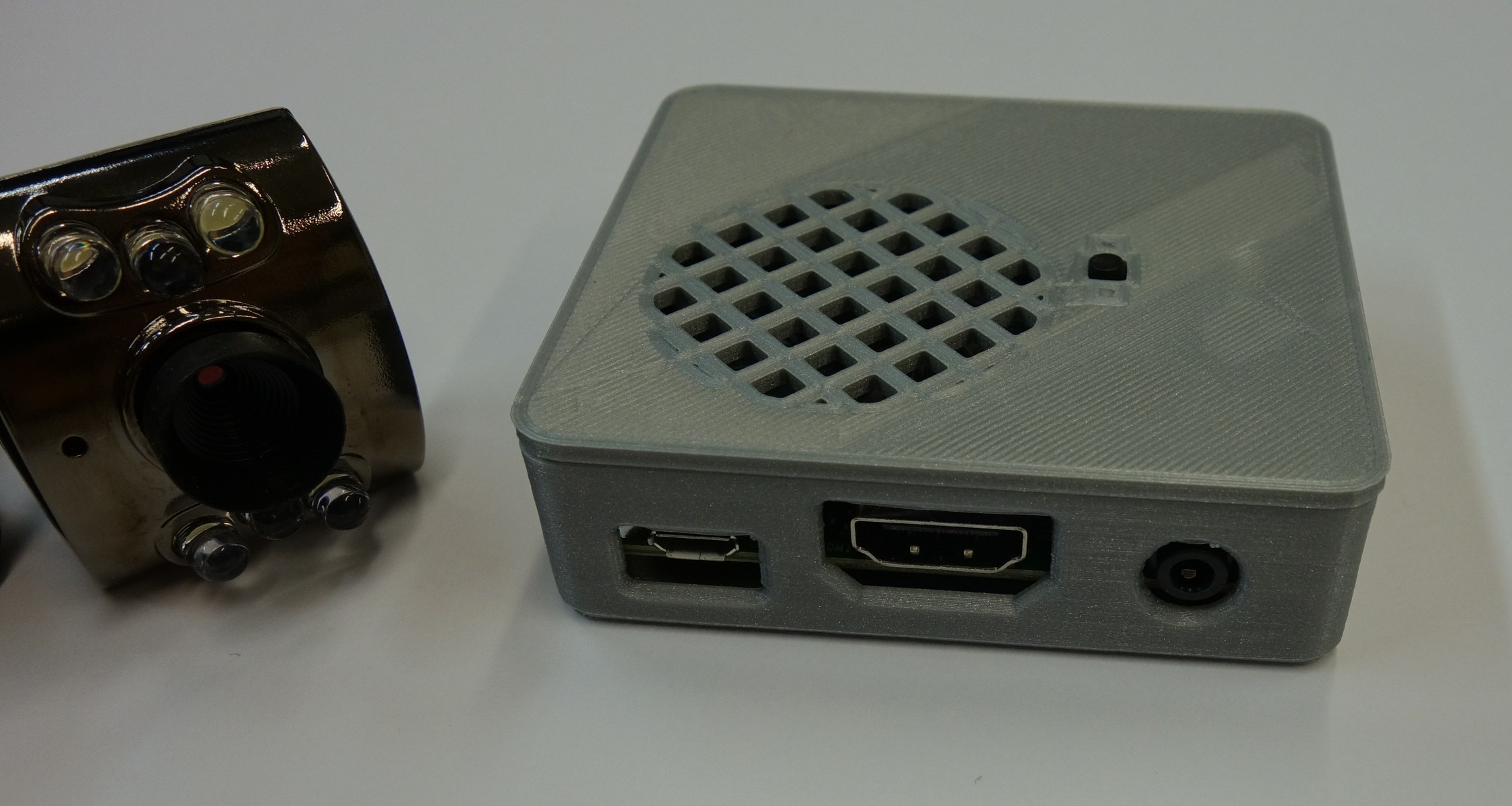Main Content
Ansprakon - 3D printed display-to-speech-converters

Welcome to the website of the Ansprakon project.
Ansprakon, short for "display-to-speech-converter" ("Anzeige-Sprachausgabe-Konverter" in German) is a device that was developed in the group of Prof. Martin Koch at the Philipps-Universität Marburg as part of a project of the same name. The device is used to capture the content of simple displays (which often occur at various household appliances) with a camera and then make it audible via voice output. In this way, relevant household appliances can get access to blind and visually impaired people even if the operating concept is based on displays.
In our project, a technical approach was chosen to reach the goal with relatively easy resources. We document the structure and functioning of Ansprakon by providing the necessary information here and thus want to enable its replication.
Additionally, we would like to motivate people who are interested in technology to modify and further develop our approach and we would be delighted if such a development would make life easier for someone else.
First of all
For attaching an Ansprakon, the household appliance must not be opened or otherwise modified inside. This lowers the threshold for the replica so that it is also possible for laypersons without electrotechnical training. Nevertheless, we must emphasize that replicating an application requires a certain amount of prior knowledge. We recommend everybody to read over the complete technical documentation first to get an idea of whether the techniques used correspond to your own abilities. The technical documentation reflects the result of the project and shows how, to our knowledge, a functioning Ansprakon can be assembled. However, we can not give a functional guarantee, nor are we responsible for damages of any kind that may result from attempting to reproduce or use an Ansprakon.
The technical basis
Ansprakon is based on a single-board computer with Linux. We use the Raspberry Pi Model A + because of its compact size and low price. The 3D-printed housing parts are matched to their dimensions. Apart from that, it is also conceivable to experiment with other single-board computers, possibly with higher computing power.
For image capturing, we used a USB connected webcam (LogiLink UA0072A). Again, the use of a different model is also conceivable, taking into account that 3D printed mounting parts are adjusted accordingly. For example, we also used a LogiLink UA0172 for one device which provides better image quality but at higher costs.
Other components used for the Ansprakon are a button (for triggering the speech output), an amplifier (that raises the audio signal to an appropriate volume), and finally a speaker (that makes the signal audible).
List of the used components
Single-board computer Raspberry Pi Model A+
Camera LogiLink UA0072
Speaker CUI INC CMS-40504N-L152
Push-button Namae Electronics JTP-1138F
Amplifier adafruit 2130
Memory card Transcend Premium microSDHC card 4 GB Class 10
Power supply Basetech PPC-5MU PPC-5MU
In addition, some 3D printed parts as well as screws, threaded rods and nuts (M3 and M5) are necessary.
The housing for the single-board computer is based on the "Raspberry Pi A + Case" by adafruit (license CC BY-SA 3.0), which has been supplemented by a modified lid. This lid can accommodate the button, the amplifier, and the speaker.
To attach the camera, one the one hand you have to ensure a firm grip at the household appliance, on the other hand, you have to position the camera in front of the display so that its content can be fully captured. For this purpose, we are using 3D-printed connecting parts whose distance from each other part can be adjusted by threaded rods. The part which is attached directly to the household appliance is each specially adapted to this. The other connecting parts are largely universally applicable.
Previously supported devices
The following list contains all devices that have been successfully equipped with an Ansprakon within the project. We provide CAD drawings of mounting parts for the camera and device-specific adaptations of the software for recognition and speech output. Building an application for a device listed here should, therefore, be possible with little or no adjustments. Adjustments may become necessary when the lighting conditions at the place of installation are very different from those in our rooms. In order to build an Anprakon for a previously unsupported device, it makes sense to use our approach as a starting point.
List of devices
thermometer Basetech E021
bathroom scale ADE BE 930 Agneta
bathroom scale Beurer PS890
thermometer TFA WS 1011
clock radio Karcher UR 1040
thermo-/hygrometer
clock radio ICES ICR-210
microwave Schneider MW 720
thermometer Techno Line WS 7012
microwave Severin MW 7892
blood pressure monitor Beurer BC 44 659.05
money counter Conrad 755002
clock radio new one CR 120
kitchen radio AEG KRC 4344
clock radio for children Muse M-167 KDB
washing machine Bosch WAN280A1
tumble dryer Bosch WTW845W0
washing machine Miele WDB030 WCS Eco
microwave Sharp R242WW
measuring tool (multimeter) Voltcraft M-3650 CR
high voltage supply
blood glucose meter Medisana MediTouch 2
Software
The software, which was developed as part of the project, brings the hardware described above to life and forming a functioning Ansprakon. You can find the source code in a Git repository. There you will also find an explanation of the operation principle of the software, which helps you to get started, as well as the CAD drawings of the mount parts.
Funded by: German Federal Ministry of Education and Research (FKZ: 13N14289)